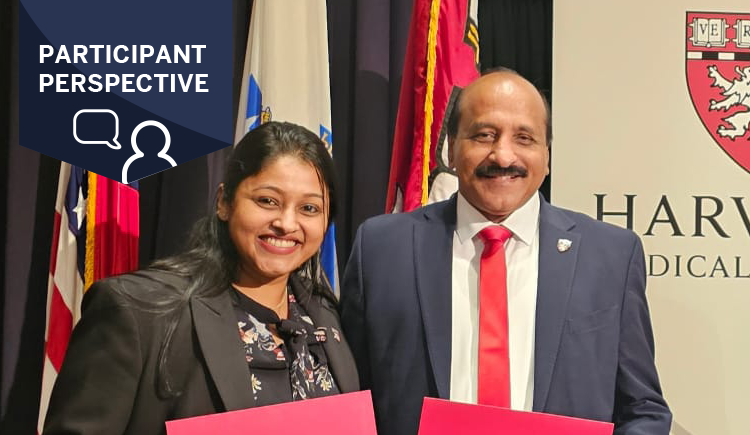
Chronic HIV infection remains a major public health issue.
According to 2017 data from UNAIDS, there are still 36.9 million HIV-positive individuals worldwide, including 1.1 million in the USA, of whom 1 in 7 are unaware of their status. HIV infection usually has a slow and paucisymptomatic infectious development, which makes recognition of infection difficult and leads to its persistence. HIV disproportionately affects individuals in less developed countries and can only be treated with multiple expensive drugs, the availability of which depends on the country. Furthermore, despite the phenomenal progress in anti-HIV drug efficacy (leading to sustained undetectable levels of viral load), long-term infection and treatment are associated with other comorbidities from cardiovascular diseases to certain cancers (Taiwo et al., 2013). The search for therapeutic or prophylactic vaccines remains the best option to fight HIV and prevent its permanent development.
“I was taught that the way of progress was neither swift nor easy” (Marie Curie).
Unfortunately, after almost 40 years of research, no HIV vaccine has really proved effective. Only four HIV prophylaxis vaccines have reached the large-scale efficacy trials (phase III) and no HIV therapeutic vaccine has gone beyond phase II (safety and immunogenicity). The only encouraging clinical outcome was in 2009 when the RV144 clinical trial conducted in Thailand showed the possibility of protecting 31% of HIV-exposed seronegative individuals (Rerks-Ngarm et al., 2009). This low success rate for vaccine trials is due to (i) the extensive genetic diversity of the virus (one to ten mutations per genome per replication cycle), (ii) the rapid establishment of latent viral reservoirs (integrated viral DNA in the human genome) and (iii) the failure of the immune response to adapt to HIV evolution.
Previously, vaccine development was mainly focused on inducing a T-cell memory response: i.e., promoting long lasting immune cells that possess a specific response to HIV antigens. Now, recent vaccination formula is more focused on inducing a humoral response and specifically, broadly neutralizing antibodies (bNab). These are a particular class of antibodies than can block the viral entry of a large number of different HIV strains. The bNab are already good correlates of protection in other infectious diseases like yellow fever, smallpox, and measles (Amanna et al., 2008). Despite its genetic diversity, the virus still possesses a few constant regions that can be targeted by bNab. Attempts to induce broadly neutralizing Abs against HIV-1 during previous vaccination studies were problematic because the mechanisms of bNab generation are not fully understood.
However, natural anti-HIV bNab generation has been shown, mainly in rare individuals, who despite being untreated for HIV, do not progress in the long term and can control the infection and block the development of AIDS. Several animal and human studies have highlighted the putative role of bNab in protective immunity after passive transfer of the antibodies, in which a major but transient effect on HIV viral load was observed. For instance, a single infusion of 3BNC117 bNAb in an HIV-infected individual decreased the viral load for up to 28 days (Caskey et al., 2015).
The particular maturation features of bNAbs make them extremely difficult to induce with vaccination and indicate that one of the most important challenges for vaccine development is to characterize well-defined immunological targets that specifically stimulate neutralizing antibody generation.
Results from a trial of one of the most promising prophylactic vaccines was just published in Lancet from Barouch and colleagues (Barouch et al., 2018). A phase 1/2a clinical trial named APPROACH (accelerate phase to validate safety and immunogenicity in healthy subjects) was conducted. In parallel to the human study, the same vaccine was tested in a rhesus macaque’ model to evaluate the level of protection against HIV infection.
The vaccine is composed of an adenovirus, used as a vector to carry several HIV immunogens, and elicit a broad immune response to viral antigens. It is considered as a mosaic vaccine because it contains a wide range of HIV antigens that were bioinformatically predicted to induce a sustained and specific immune reaction.
393 HIV-uninfected individuals, considered at low risk to become HIV infected, between the age of 18 years and 50 years were randomly separated into 8 groups and given a different vaccine formula to assess the impact of the different components and the vaccine schedule. All the subjects were administered intramuscularly at 0, 12, 24, and 48 weeks and were followed for up to 96 weeks. Seventy-two rhesus macaques underwent the same vaccine regimen. There was no major safety or tolerability issues in any of the vaccine groups. All vaccine regimens were highly immunogenic, and as expected the antibody titer against HIV antigens were variable between the groups.
Specifically, the group who received an HIV protein boost after their first injection of vaccine had the highest titer of protective antibodies and it was reported that vaccinated patients developed high levels of antibody specific to the external structure of HIV. Furthermore, the vaccine also led to the development of a protective cellular response, as defined by the presence of HIV-specific T cells, active against HIV antigens.
Furthermore, comparable responses were observed in macaques. Interestingly, 67% of animals vaccinated with the most efficient vaccine were protected from repetitive challenges with highly pathogenic simian-HIV. Those important results of this broad HIV-1 vaccine have led to the initiation of a phase 2b trial to evaluate its efficacy of protection against HIV in humans who are at risk of HIV infection.
To conclude this post, it is important to point out that there are also other strategies being investigated in the fight against HIV, including new drugs, immunotherapies, or even gene therapy. The main lesson from all this research is that the time needed to bring a vaccine candidate is long but necessary to validate effective anti-HIV vaccine. Nonetheless, we can be optimistic that we are getting closer with those major discoveries especially in the relationship between the immune system and HIV.


